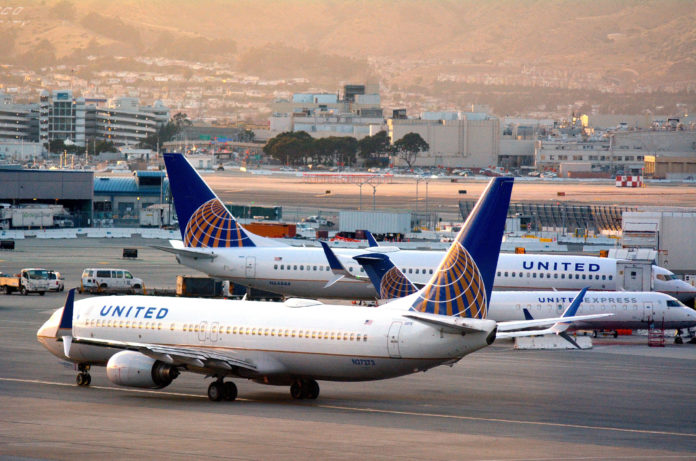President Trump told United States airlines that he would provide government assistance for them so that they could compete healthily with foreign carriers. These foreign carriers are aided by their governments, a process that has enabled them to become the world’s leading airlines. The airlines that the United States is trying to gain an advantage over are specifically from the Middle East. The government support towards these airlines has enabled them to offer top-notch services and access otherwise unattainable resources. President Trump made the statements over last month, a very positive signal from the White House for the growth of the aviation industry in the United States. The airline industry’s campaign for government support has been in existence since 2015.
Middle East’s Unfair Competition
Airlines from the Middle East, specifically Emirates, Qatar and Etihad Airways have been purported to have received $50 billion in subsidies from their governments. Such subsidies mean that the airlines can afford to train and pay their employees on offering world-class services. Also, more directly, these airlines can make flights to various destinations at cheaper costs. Further, they can use their increased profits to make larger investments in worldwide markets, expanding their scope and clientele.
Emirates was named the best airline in the world following a report by consumer-aviation website Skytrax in 2016. The company also operates the largest fleet of Boeing 777s and Airbus A380 superjumbos. The airline has also posted 28 consistent years of profit within the aviation industry.
Additionally, Qatar Airways was named the best airline worldwide by Skytrax in 2011, 2012 and 2015. The airline also plans 15 new destinations worldwide for the 2017-2018 fiscal year. One of these destinations is to be in Las Vegas where it will have four weekly flights.
Over 2016, Etihad Airways grew sustainably to increase its clientele by 6 percent. Further, its capacity for passengers rose by 9 per cent over the year. The company was also rated five stars by Skytrax last year.
Things, however, have not turned out as rosy for US airlines.
Currently, US Airlines do not receive subsidies from the government. As a result, they charge standard rates on air fares, and expansion is primarily as a result of returns from the business and capital from shareholders. This means their rate of development is slow and competition is stiffly against them since consumers will opt for cheaper fares from Middle Eastern airlines. The lack of subsidies has resulted in some airlines losing a significant number of their clientele to Middle Eastern carriers. This has led to decreases in staff and budget cuts, incurring losses and causing the loss of employment to many Americans.
Conflicts over Time between US Airlines and the Middle East
- In early 2016, Qatar Airways began to operate a flight to Atlanta International Airport. The airport is the world’s busiest, clocking over 100 million passengers a year. However, this move was met with a lot of protest from US-based aviation company Delta Airlines. The result? Passengers were caught in between the conflict. Qatar Airways’ inaugural flight to the airport had nowhere to land. The gate it was supposed to deplane on just so happened to be occupied by Delta Airlines at the time. As such, the plane had to be towed to a remote location, and its passengers were transported back to the terminals by bus.
- On January 23 this year, Emirates announced that it was going to begin daily flights from Newark Liberty International Airport, New Jersey to Athens in Greece. The route has not been a major market for US carriers in the recent past. However, Delta and United Airlines offer seasonal services for the route. Emirates says that the move was from requests by the Greek government to offer more services along the route to the US. Further, the company will be the first airline to offer nonstop services along this route, which means lesser clientele for current route dominants United and Delta Airlines.
In protest of this move, United Airlines will stage a protest on Sunday at Newark International Airport.
- Further, Emirates has made recently cut down its airfare for across 12 US destinations. These decreases in pricing are another thorn in the flesh of US-based airlines, as clientele shifts significantly for Emirates and its services. Airlines based in the US are not able to sustain the low fares that Emirates is offering for some of its destinations, which could decrease markets and could force them to stop running some of their flights altogether.
President Trump’s Promise and Encouragement
Trump has promised to cut down regulations and taxes on US-based airlines. In a meeting he had with Airline executives, he said that they should expect to hear something “phenomenal in terms of tax.” He has cited that the growth of Middle Eastern Airlines within American markets is to an extent unfair.
The President has said he has listened to the complaints of key players in the US airline industry and is keen on helping them solve their problems as well as create more jobs for the American people. Delta Airlines, for example, has said that it plans to create 25,000 jobs over the next five years for Americans.
“A lot of that competition is subsidized by governments, big league. I’ve heard that complaint from different people in this room. Probably about one hour after I got elected, I was inundated with calls from your industry and many other industries, because it’s a very unfair situation,” he said.
Additionally, the President has expressed views this month on the improvement of air traffic control, stating that current air traffic control technology is outdated. He has promised to make improvements in the operation of these areas within airports. His statements follow a pledge to table a $1 trillion budget for the development of infrastructure across the United States.
Consequently, the share value for US Airlines has risen following Trump’s statements, showing that they are already headed in the right direction.
So far, President Trump has already begun mapping out the plans to develop infrastructure across states nationally.




